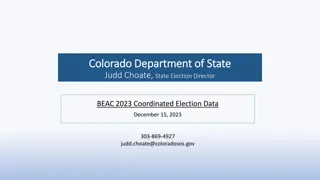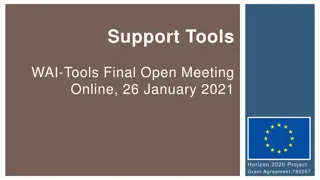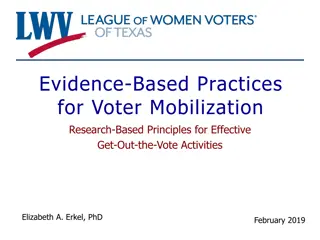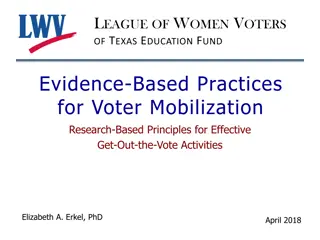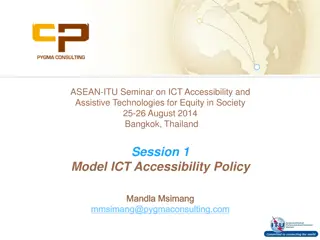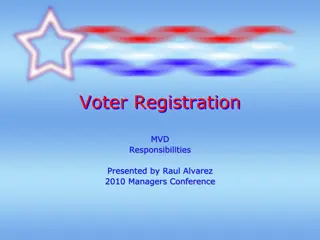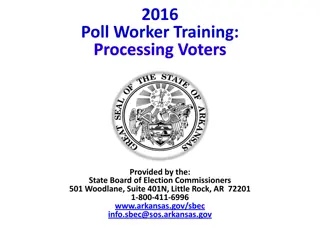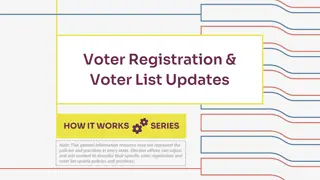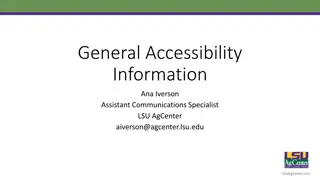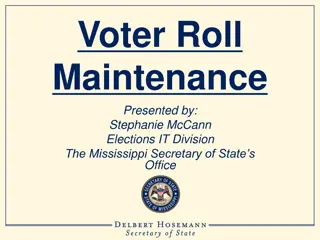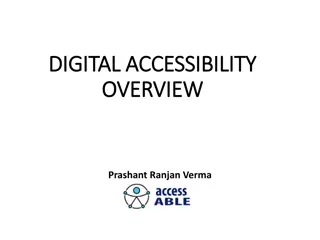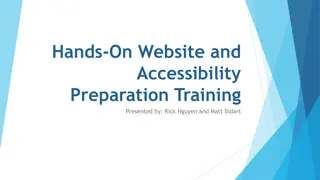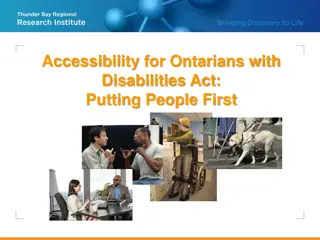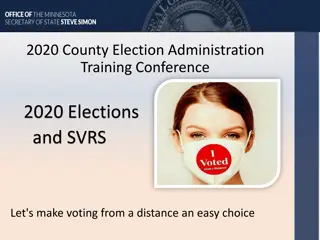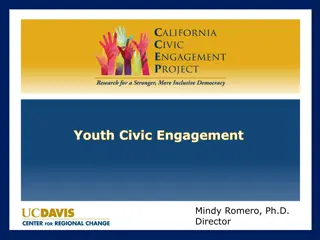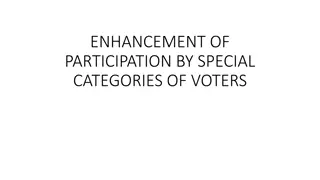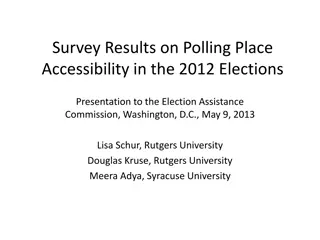Understanding Voter Accessibility for People with Disabilities
This training guide covers essential information for poll workers to assist voters with disabilities effectively. It includes disability etiquette, important facts, general guidelines, person-first language, and voter assistance details. Voters with disabilities have rights under HAVA and ADA, ensuring non-discriminatory treatment and reasonable accommodations while voting. Key topics address handling disability issues respectfully, communicating with individuals, ensuring privacy and independence, and providing necessary support. Enhancing awareness and sensitivity toward voters with disabilities is crucial for an inclusive electoral process.
Download Presentation

Please find below an Image/Link to download the presentation.
The content on the website is provided AS IS for your information and personal use only. It may not be sold, licensed, or shared on other websites without obtaining consent from the author. Download presentation by click this link. If you encounter any issues during the download, it is possible that the publisher has removed the file from their server.
E N D
Presentation Transcript
Voters with Disabilities: Poll Worker Training Kristen E. Jones HAVA Training and Technical Support Specialist Updated October 2013 HA21
Agenda Overview of disability Disability Etiquette Issues and How to Handle Them Questions
Important Disability Facts 1 in 5 people have a disability. Definition: physical, mental, or sensory condition that limits major activities of daily living walking, talking, seeing, hearing, concentrating, etc. Some disabilities are hidden (i.e., autism, mental illness, PTSD, chronic fatigue, cancer) People with disabilities represent 15% of the voting population.
Important Facts About Voters with Disabilities Voters with disabilities have rights under the Help America Vote Act (HAVA) and the Americans with Disabilities Act (ADA) to be treated in a non-discriminatory way and to receive reasonable accommodations in voting. Examples: To vote independently and privately. To have their polling place be physically accessible and free of barriers. To have access to an accessible voting booth. To receive assistance/support from a person of their choice or a poll worker. To be accompanied by a service animal. To be treated with respect and courteously. By law, you may not ask a voter what the nature of their disability is!
General Guidelines When Working with a Voter with a Disability Be respectful. Just ask. Communicate with the person. Respect the person s privacy. Don t feel pressured. Other helpful tips: Always ask if the person would like any assistance, accept the idea that they may decline. Do not touch/move a person s mobility device. Look and speak to the person not their companion/interpreter. Do not pity or tell them they are inspirational. Treat them the same as any other voter!
Person First Language Person First Language is the preferred method of talking about or speaking to a person with a disability. A person who uses a wheelchair. A person with an intellectual disability. A person who is blind/visually impaired A person who is deaf/hard of hearing People with disabilities have various abilities and capabilities. Avoid making generalizations or assumptions about their level of functioning.
Voter Assistance for Voters with Disabilities A voter with a disability may choose to have a person of their choice or a poll worker to support or interpret for them. The voter must make a noticeable request that they need assistance due to a disability. Assistance may be obtained to enter the voting booth, use the equipment, read the ballot, mark the ballot, and exit the polling booth. Always ask if additional assistance is needed, even if the voter has a support person or interpreter.
Issues and How to Handle Them: Scenarios A man who is blind and using a white cane; accompanied by a friend who will assist him in identifying the ballot items. A woman with hearing aids who cannot understand what you are saying. A man who is unsteady on his feet, has speech that is difficult to understand.
Scenarios Continued. A woman with no visible disability who claims that her dog is a service animal for people with disabilities. A woman who says that the perfume worn by other people in line is making her faint. A person with a service dog which is barking constantly and jumping on friendly people in line to vote.
Things to Remember! Focus on reasonable, doable solutions delivered in a responsive, courteous manner. Rely on the voter as the expert. If an issue you are unfamiliar with arises, ask them what you can do to best assist them. Make every effort to ensure your voting area is set up in an accessible manner and remains free of barriers during voting hours. It is not up to you to determine a persons registration qualifications or competence to vote. Make every effort to not embarrass a voter with a disability.
For more information or other questions contact: Disability Rights Texas Voter Rights Hotline 1-888-796-VOTE (8683) VOTE@DRTx.org www.disabilityrightstx.org

 undefined
undefined






